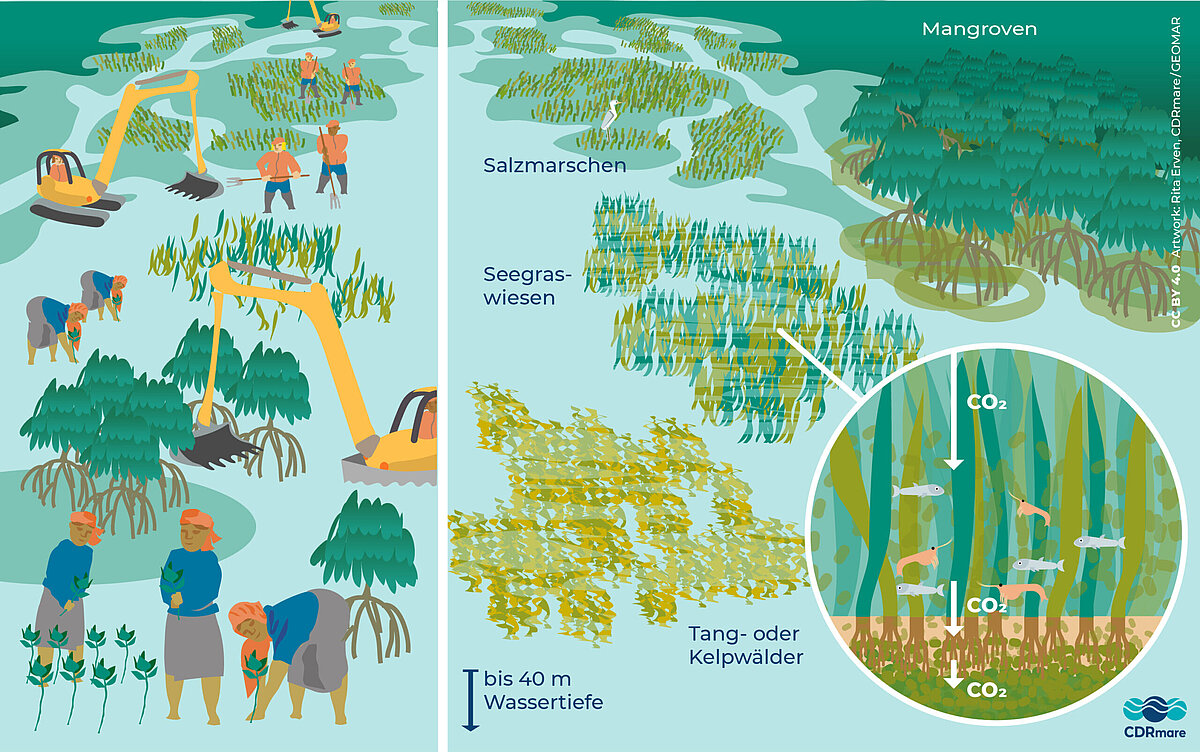GEOMAR Helmholtz Centre for Ocean Research Kiel
Communication and Media
Fon 0431 600-2807
Mail media(at)geomar.de
Blue Carbon Management
Blue carbon ecosystems such as mangroves, seagrass beds, salt marshes, and kelp are extremely efficient at absorbing CO2 and storing carbon in their biomass and soil. Therefore, maintaining and restoring blue carbon ecosystems can increase the amount of carbon stored in coastal sediments. The permanence of carbon storage depends on the persistence of ecosystems. Sequestration rates and soil carbon content of blue carbon ecosystems are highly variable and depend on species, geography, and hydrologic systems, among other factors, but significantly exceed those of temperate and tropical forests per area. However, the reforestation potential of these ecosystems is limited to only a few million hectares worldwide. Restoring and protecting blue carbon ecosystems has many positive ecological co-benefits. They promote biodiversity and provide important habitat for many marine and terrestrial species. Their structural properties also help protect coasts from erosion, storms, and the effects of sea level rise.
Seagrass Meadows as Carbon Reservoirs
Seagrass meadows store carbon through the production of their biomass, as well as by filtering out fine organic sediment particles. Their photosynthesis binds CO2 dissolved in the water, which can reduce the amount of man-made CO2 from the atmosphere and store it as "blue carbon" in the soil for a longer period of time. Seagrass meadows in the Baltic Sea cover an area of about 285 square kilometers and store an average of 2,700 grams of carbon per square meter. In the process, they enrich the seabed with organic particles equivalent to between 26 and 52 grams of carbon per square meter per year, which is 30-50 times higher than in comparable forest-covered ecosystems on land.
The project "Seagrass Blue Carbon" at GEOMAR within the Helmholtz Climate Initiative investigates from 2019 to 2021 how much CO2 from the atmosphere is stored by seagrass meadows in the German part of the Baltic Sea, what contribution they make to the carbon budget in Germany, and how populations can be protected and lost meadows renatured.
Other projects on seagrass meadows with GEOMAR involvement are SeaStore and the sea4soCiety consortium of the research mission Marine carbon sinks in decarbonisation pathways (CDRmare).







